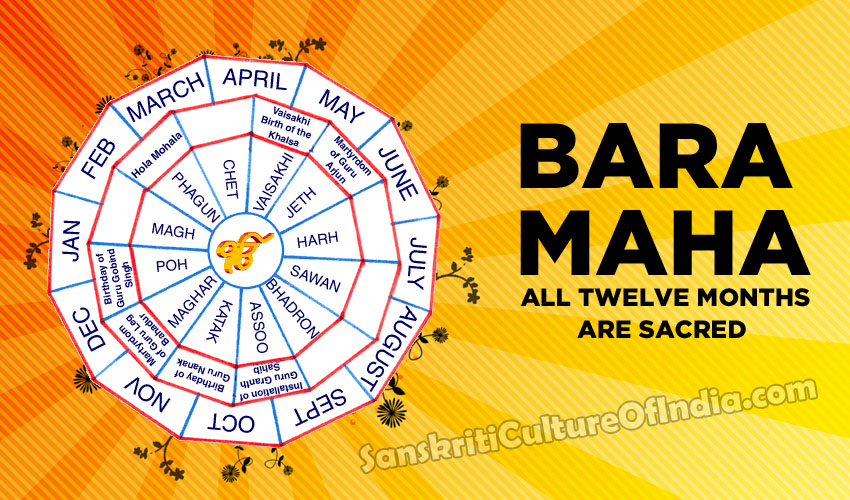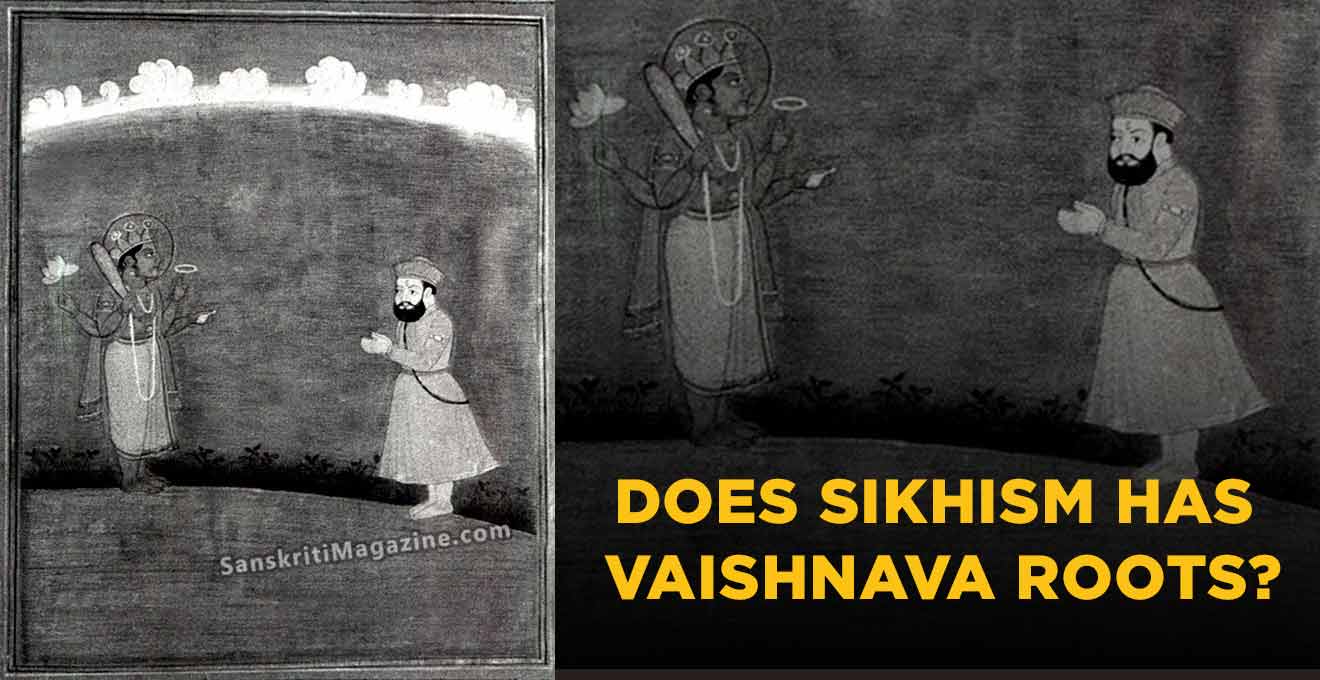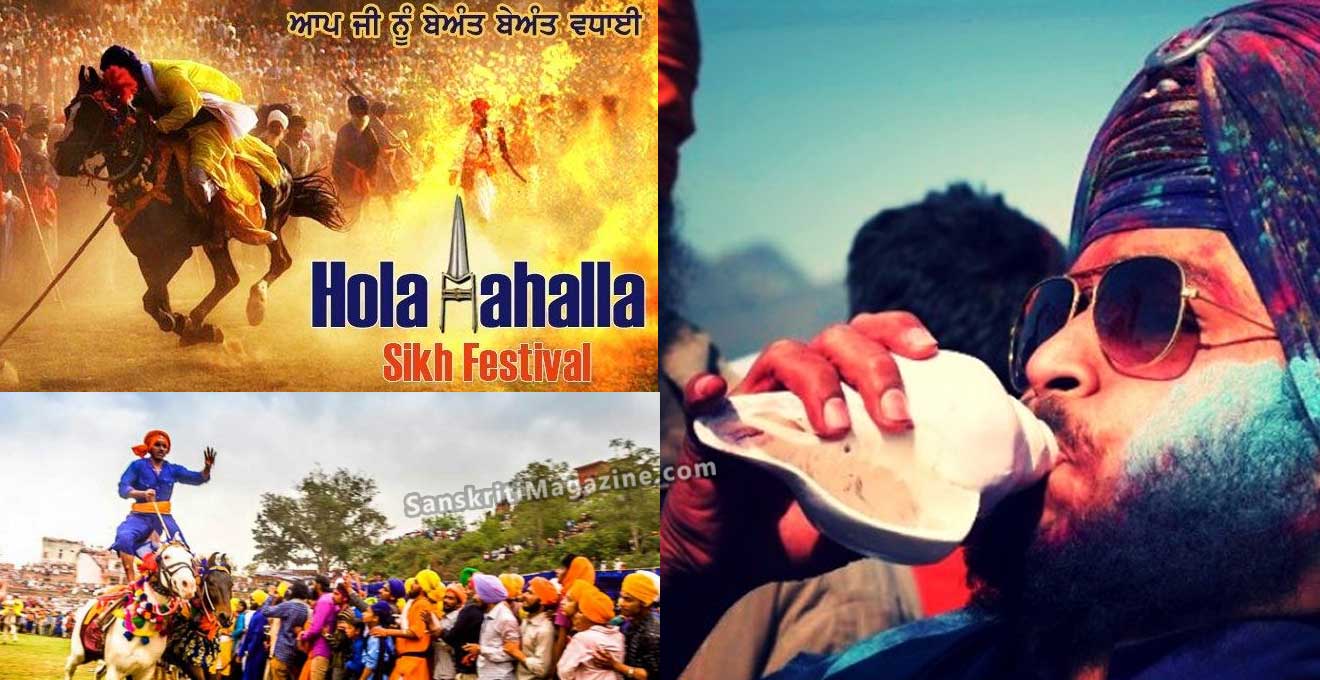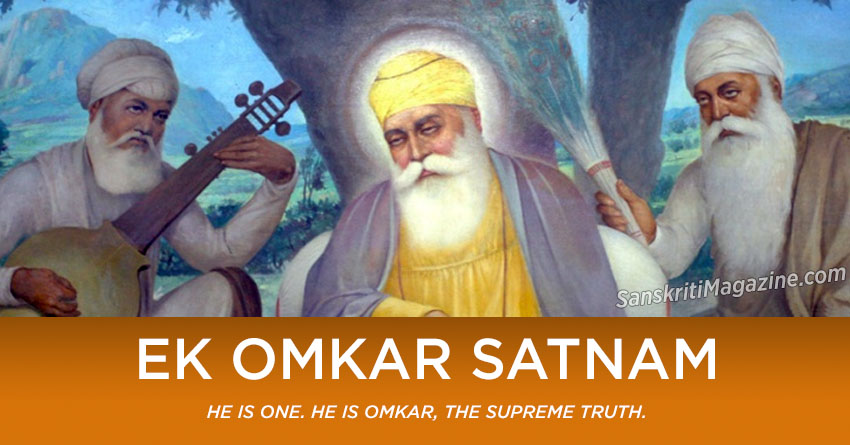In Sikhism, viraha or separation is commonly used in Barah Maha or 12 months to depict the moods of a love-stricken woman in terms of the changing seasons of Nature through the year.
Guru Nanak’s Barah Maha, a hymn in Raga Tukhari, depicts the emotions and yearnings of a woman personifying all human beings separated from her beloved, the Supreme Being, using the moods of Nature in each month.
The separated woman finds her own agony reflected in the different faces of Nature, transforming love poetry into a spiritual one.
The calendar begins in Spring with the month of Chet, mid-March to mid-April, when every life form is celebrating. But the young woman stands alone. Her beloved is not by her side.
In the month of Vaisakh, mid-April-mid-May, she begs him to come home. Without you I am not worth a dime, but if you are with me, I become priceless.
In the month of Jeth, the earth is burning with heat which drives all beings to look for a cool place, that is, seek refuge within. The bride, too,moves into her interior, contemplating the divine groom and his virtues.
In the scorching month of Asar, even the crickets wail. The bride, too, seeks shade. After the blazing heat of Asar,comes the month of Savan, bringing welcome rain but the bride is alone who wails, O mother, it is death for me.
In the month of Bhadon, there is opulence,fullness everywhere. Overflowing with life, Nature dances with joy but the bride stands alone in the midst of it, she exclaims, “Where, O where is comfort for one without the groom.”
The seventh month of Asuj is one of Self-realisation. White flowers are in bloom, symbolising her own white hair; the bride is greying but the possibility of meeting with her groom makes her optimistic.That alone is ripe-sweet which ripens slowly in its own sweet time.
In the month of Kattak or Kartik, the days are shorter, and lamps are lit earlier in the evenings. The lamp is knowledge, of seeing, of recognising the Divine; so ultimate union is near at hand.
In the month of Maghar, her sorrow departs. Listening to shabad kirtan praising the divine groom through song, music, poetry she becomes a part of the spiritual gathering.
In the month of Poh, the bride perceives the unity of the universe and,at the same time, implores her compassionate groom to reveal Himself. Magh is the month of pilgrimage when the bride realises that the destination is within.
All charity and worship for me is the recognition that,throughout the yugas, there is but One Singular Groom. This verse celebrates the existence of the Singular Reality and reiterates that there is none other than Him. He is in everything and is everywhere. He pervades water, earth and space.
The Singular Beloved pervades time past, present and future.
With the ego gone, finally, in the month of Phalgun, her desires end and she experiences Bliss.There is no duality left… not even between day and night. Self and the Supreme Being are One. What remains is ecstasy.
In the final passage of the Barah Maha, Guru Nanak says that all the 12 months, the six seasons, the lunar and the solar days, the hours, the minutes, the seconds are bhale or blessed. Therefore, one must participate in life, discarding hesitation as well as superstition.
Welcome life, for all beginnings are auspicious.
~ By: Kulbir Kaur











